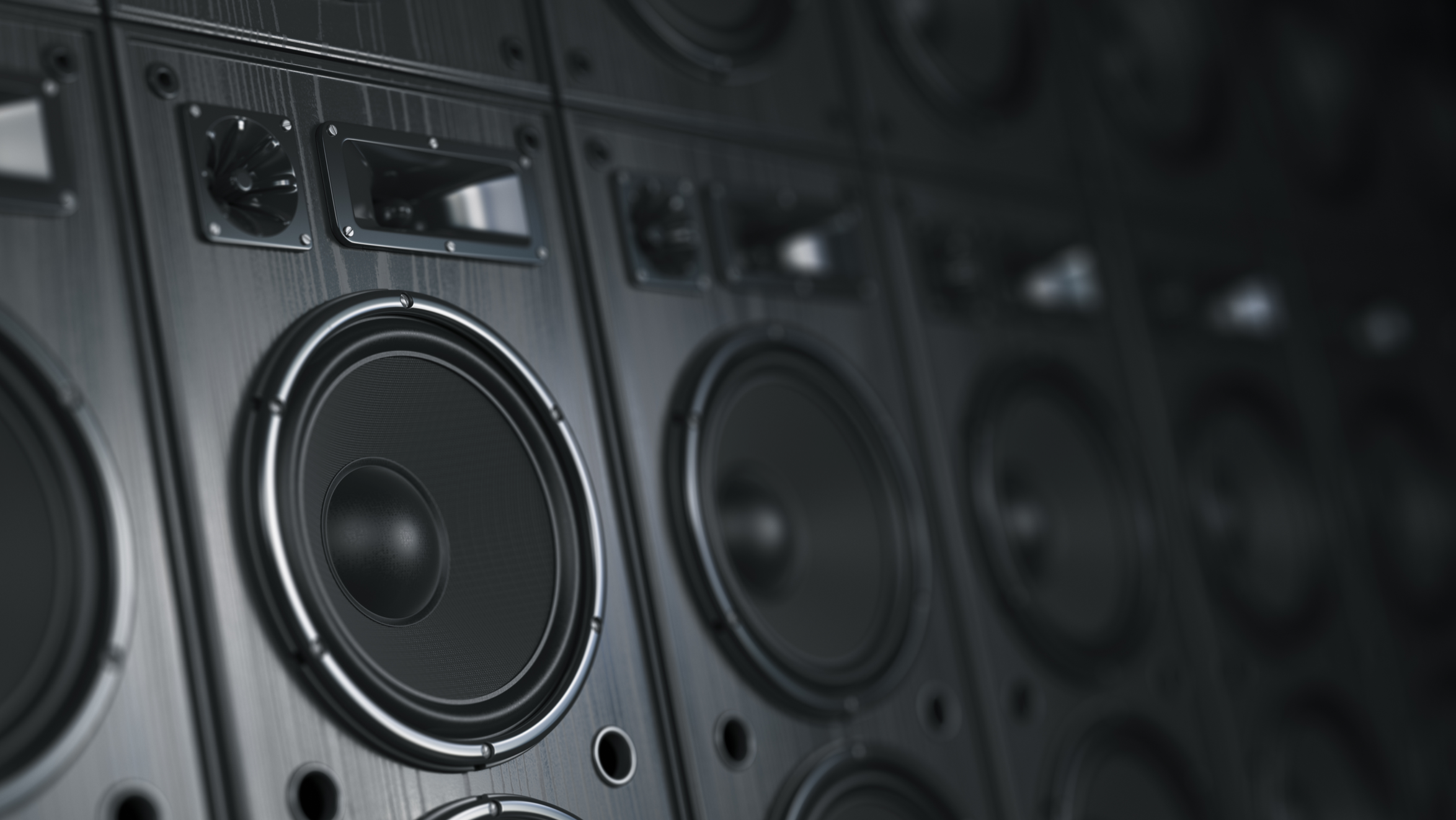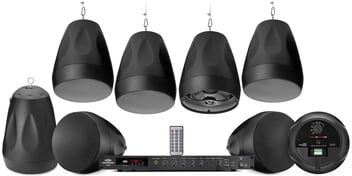Opening a new business is hard, and the last thing you want to think about is navigating your way through figuring out what kind of commercial sound system you should purchase. There are speakers, amps, and mixers to consider. Inputs, outputs, volume zones, audio zones.
Where do you begin?
Home vs. Commercial Sound Systems
The first question you might be asking yourself is: Can I implement a similar stereo system like I have at my house (a home stereo system)? Or what’s the difference between a home stereo sound system and a commercial sound system?
In a nutshell, there are a lot of differences, and it really depends on the size of your business.
Small businesses, such as coffee shops or local retail stores, might be able to get away with a standard home stereo receiver and a few pairs of speakers to provide adequate background music.
A small business could even consider Sonos. In a small location, setting up Sonos can be simple and akin to a home network, but challenges arise when you bring Sonos into an enterprise environment. Businesses that span multiple buildings and have physical firewall hardware certainly create some struggles for Sonos.
Also, note that standard stereo amplifiers put out low-voltage, high-current signals that require thick (and relatively expensive) speaker wires to power distant speakers. The more speakers you add to a stereo system, the more difficult it becomes to safely connect them. You may find that you need multiple amplifiers, driving costs up considerably.
As soon as you begin to realize that you’re going to need a lot of speakers and long wires, it’s time to look beyond home stereo systems and look to a commercial audio sound system.
Our friends over at Crutchfield do an excellent job of explaining more about the benefits of commercial sound systems.
Commercial Audio Speakers? How Many and Where Do I Put Them?
There are many different kinds of speakers and sound systems that you can choose from. With a wireless sound system for business, it’s easy to create an immersive and engaging atmosphere. Whether you run a retail store, restaurant, or office space, a well-designed sound system for business can enhance customer experiences and boost employee productivity. With a versatile speaker system for business, you can effortlessly stream commercial audio content such as background music, announcements, or advertisements.
However, a major challenge with installing a commercial sound system in any kind of business — a restaurant, bar, gym, etc. — is shorting yourself on the amount of speakers you purchase and not paying attention to where they are placed. While a commercial sound system installation professional can find the best placement for them, you can still install commercial audio systems on your own. Music should enhance the experience, not overtake it. The easiest fix for this is to purchase more speakers. This will give you even coverage across your location with the ability to turn the volume down because you don’t have to cover as much space with one speaker.
Panera is an example of a store doing intelligent things with its speaker placement. Most of their speakers are over the seating area and they deliberately did not put speakers over the ordering area to avoid major conflicts with the sound level becoming too loud while placing an order. They also wanted to put speakers in the area between the two doorways that people walk through upon entering. This gives guests an early introduction to the mood they’re creating with music.
No matter what your goal is for installing a commercial sound system, there is a solution out there for you. We’re here to give you a good, better, and best option when it comes to purchasing your sound system.
Some Options for a Music Sound System, Gym Sound System, or Office Sound System
If you're looking for a commercial audio system, consider investing in one of these options:
Your Good Option
These are the same products that have been installed since the '70s. Much of the time you will find in-ceiling speakers or smaller cone-shaped speakers lacking range. This type of solution works best in two environments: very small spaces or very large spaces where you need a ton of coverage.
Here are two examples. A very small space, like an over-the-counter burrito shop, may use one or two speakers and because they don’t have a large area to cover, they don’t have to deal with audio hotspots. A large location, such as a 15,000-sq. ft. retail store would use this option because it’s more cost-effective when buying multiple speakers. In this case, you must make the investment to buy enough speakers so that the sound is even throughout your store. The main differences between a good solution and a better solution are the bass effects and the range of the speakers.
Starting Cost: $500 worth of equipment
Product Examples: TOA, Bogen, Speco, Sonos
Your Better Option
In better solutions, you will want to get an amp plus speakers. You should only need a device that has multiple inputs with a single output. In this case, you would need to have the same audio throughout the entire location, but you would have the ability to control zone volume. The standard is to have your space not vary by more than 10 decibels. You could scale this option for locations from 500 sq. ft. to 4,000 sq. ft. This is the ideal solution for restaurants but needs to be accompanied by decent speakers.
No matter what kind of amp you have, if you don’t have decent speakers, your sound will be affected. By spending just a bit more, you will get a solution that has higher fidelity, you will limit audio hotspots throughout your location, and you will be able to scale easily.
Starting Cost: $700
Product Examples: JBL, Crown, Bose, QSC, Atlas, SONOS
Your Best Option
Your best option involves an amp with digital sound processing and an advanced mixer with multiple inputs and outputs. This will give you the ability to change audio zones and volume zones. This is best for large companies where you have multiple things playing over your speakers, requiring you to use different audio inputs. In this case, you could get away with the same quality of speakers from your better solution, while increasing the control you have over your audio zones by purchasing a better amp.
Starting Cost: $3,000
Product Examples: Bose, DBX, Crown
While all three of these options could work for your business, we suggest going for the better option. It’s worth the investment to get better speakers and a bit of control over your different volume zones. Of course, your sound quality starts with the audio source. Make sure you are using a high-quality solution for your music needs and pair that with speakers that will enhance that quality audio. It is such a waste to hook up a high-quality solution with a sound system that’s just good.
The last tip is to make sure you invest in enough speakers over anything else. Your space has different pressure zones that affect the volume levels of your music and that can be very annoying for customers. If you have more speakers and better coverage, you will be able to lower the volume across your location, resulting in a more even sound and a better experience. Music is a huge part of building atmosphere and is a great way to engage your customers.
Editor's Note: This blog was originally published on August 29, 2018, and was last updated on November 15, 2023.






